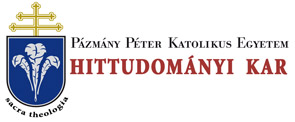Folia Theologica et Canonica 6. 28/20 (2017)
IUS CANONICUM - José Miguel Viejo-Ximénez, Raymond of Penyafort decretalist
RAYMOND OF PFNYAFORT DECRETALIST 147 and Paris. The SdC was disseminated throughout Europe and was the subject of summaries and comments during the life of its author. Since the XIII century, both the Liber Extra and the SdC are present in the libraries and in the programs of the higher education centers in which Law and Theology is taught. Still today these works challenge historians of the sources and science of canon law. (iv) Summa de casibus. The critical edition of the first version of the SdC remains to be done. Thanks to the scrutinies made since the sixties of the last century, the manuscript tradition is better known"14. The Notes on the presentation of text and apparatus in editing works of the decretists and decretalists should guide the work. Once this edition was concluded, the opportunity to undertake a second project could be assesed: replacing the edition of the second version of the SdC published in 1976. e) Liber Extra. The editorial work of Raymond has attracted the attention of the modern decretalists. They have focused, first, on the suppressions, revisions and alterations of the decretales epistolae of the predecessors of Gregory IX included in the Compilationes antiquae. In relation to this materials, future studies should take into account that Raymond was not limited to the mechanical elimination of contradictions, repetitions and superfluous words; and sometimes he contrasted the texts with other collections"'5. Secondly, modern scholars have analysed the way in which Raymond selected and shaped the decretals of Gregory IX prior to 1234. In this case, the purpose and scope of the editing work have been determined when the pontifical records or the archives of the addressees preserve the originals. Other constitutiones nostrae with short inscriptions -Gregorius or Idem- do not seem to have been part of a decretal, nor to be published before the Liber Extra."* From the editorial work on these materials it can be concluded that, unlike conventional collectors, Raymond intervened directly in the process of elaboration and production of canon law. The accomplishment of these and other tasks will assure the presence of Raymond of Penyafort in the Universities in the next decades. 1114 Cf. García y García, A., Valor y proyección, 236-238. García y García, A., Ims manuscritos juridicos medievales de la Hispanic Society of America, in Revista Espaiiola de Derecho Canònico 18 (1963) 501-560. García y García. A., Canonistica Hispanica. in Traditio 22 (1966) 468-469. García y García, A., Canonistica Hispanica (Ht), in Traditio 26 (1970) 457-469, esp. 461. Bestül, Th. H., An Unrecorded Manuscript of the Summa de Poenitentia of Raymond of Pennaforte, in Manuscripta 32 (1988) 206-207. Mann, J. D., Unstudied Manuscripts of the Summa de Poenitentia of Raymond de Pennaforte, in Manuscripta 34 ( 1990) 45-49. 1115 For instance with the Compilatiti romana (1208), cf. Kuttner, S.. Bernardus Compostellanus, 333. Reno, E. A., The Authoritative Text: Raymond of Penyafort’s Edititig of the "Decretals of Gregory IX” (1234) (Ph.D. diss.; Columbia University, 2011), offers eloquent examples of Raymond’s work on the decretales epistolae of the Compilationes antiquae, pp. 146-257. 1116 Kuttner, S., Raymond of Penafort, 68-72. Examples in Reno, E. A., The Authoritative Text, 316-512; cf. also Wetzstein, Th., Resecatis superfluis? Raymond von Penafort und der Liber Extra, in ZRG Kan. Abt. 92 (2006) 355-391.
